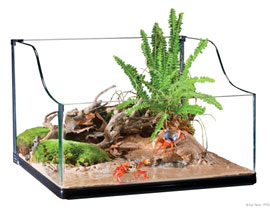Biomes are large regions of the world where plants, animals, and other living things have similar adaptations that allow them to survive in that particular environment.
![]() Scientists often disagree on the exact number and kinds of biomes. In this resource, you will focus on six major land biomes. Click on the image below to learn more about how each land biome supports different types of organisms.
Scientists often disagree on the exact number and kinds of biomes. In this resource, you will focus on six major land biomes. Click on the image below to learn more about how each land biome supports different types of organisms.
A biome is made up of many similar ecosystems. Ecosystems are the abiotic and biotic factors that interact in a particular area. In other words, the living factors, such as plants, animals and other organisms, depend on each other and the nonliving factors, such as water, sunlight, and temperature.
![]() Watch the following video to learn more about ecosystems and the interactions of biotic and abiotic factors.
Watch the following video to learn more about ecosystems and the interactions of biotic and abiotic factors.
Source: How abiotic and biotic factors make an ecosystem, mreppsclassroom, YouTube
There are many different types of ecosystems. Ecosystems can be grouped into two large categories: terrestrial or land ecosystems and aquatic or water ecosystems.


Ecosystems have no particular size. An ecosystem can be as large a desert or as small as a garden. Aquarium and terrariums are also considered ecosystems. To be classified as an ecosystem, there must be an interaction or relationship between living and nonliving factors.
Sources for images used in this section, as they appear, top to bottom: